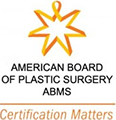Breast Augmentation – How Do I Choose?
January 5, 2013
Breast Augmentation in cumming ga, breast enlargement, Breast Implant Surgery, saline breast implants, silicone breast implants
Breast augmentation is one of the leading cosmetic procedures in the United States. In the right hands it is a safe and life changing operation with minimal recovery. As plastic surgeons we strive for your complete satisfaction, and this can be accomplished by honest and educated dialogue. Your input is extremely important! What follows is a primer on breast augmentation and points to consider when talking with your surgeon
Implant type
Breast implants available in the U.S. are primarily made by three companies: Mentor, Allergan, and Sientra. All implants are safe, and each company has a different profile to offer. Implants are defined by their shape, fill material, and surface texture. Ask your surgeon which implant company they prefer and then read the company’s literature to discern slight differences for each characteristic. Your first choice is silicone or saline implants. Silicone gel implants feel more natural with less imperfections, but they require larger incisions and cost more ($1900/pair versus $900/pair for saline). Over twenty years of research have proved they are safe, and I would recommend them to family and friends. Saline is also a good option, and these implants can be placed through small incisions under your arm or even through your belly button.
Breast implants come in a variety of shapes. First, determine if you like the round shape of traditional implants or the newer anatomic or tear-drop shape. The anatomic implants give more lower breast fullness with less of a shelve or ridge in the upper breast. These may look more natural, but they also show less cleavage. They can also flip or rotate and not all surgeons are familiar with implanting them. Second, implants are defined by their height, width, and projection. You can measure the width of your breast in centimeters starting approximately 2cm to the side of midline and ending at the lateral crease of your natural breast. Once you know this, you can determine the variations in height and projection to choose from. More height will give you greater upper breast fullness and cleavage, while increasing projection will take some of this away and place more fullness in the center of the breast.
Implant location
Implants can be placed above the chest muscle (directly under the breast tissue) or under the chest muscle. There is much debate by plastic surgeons as to which is better, but in reality either location can make beautiful breasts. Most surgeons agree that if you have minimal breast tissue to start with then the implants should be placed under muscle to hide them better. Otherwise, this is your choice. Implants placed under the muscle often have less of the “fake” look; however, sometimes they can move when you use your chest muscles (hyper-animation). Placing the implant above the muscle usually gives more cleavage, but imperfections can be felt more easily since they have less covering tissue. Ask your surgeon what he or she feels is best for you.
Incisions
Incisions can vary from 2cm up to 6cm in length and can be placed under your breast, around you areola, in your armpit or even in your belly button. The most common location is under your breast as this provides direct access to your breast tissue and chest muscle. I do not recommend the areola incision. Although the scar is well hidden, your surgeon will have to cut some of your breast ducts which exposes the implant to bacteria as it is inserted. The choice of incision is not as important, and often your surgeon will go with the one he or she is most familiar with.
Implant size – choosing the right fit
This is the hardest and most important decision you and your doctor must make. Your job is to determine a range or window that you think you want and clearly discuss this with your surgeon. Do not accept anyone telling you they know what will fit you best! First, accurately determine what size you are now. All women use bra sizes even though this is an inaccurate estimate. Take the time to go to a store like Curves and have a professional size you. Remember that your breasts change slightly when ovulating and menstruating.
Now the hard part is to decide what size you would like your breasts to be. Bringing in photos of celebrities is terribly misleading and often complicates the process as those women have different builds than you. Instead, decide if you want to be a C cup or a D cup (as an example). The internet is full of tips and tricks to help you decide. One includes filling bags with a certain volume of salt and placing them in your bra. No matter the method, try and determine an estimate or range you would be happy with (e.g. full C to small D). This can help us determine a spectrum (say from 300cc to 400cc) of implants to bring to the operating room. The final decision is then made by the surgeon on the operating table with your wishes in mind.
Finally, know that most women that are dissatisfied with their size want to be larger. In reviewing our patients over the last ten years, only about 6% come back requesting to be changed. Of these women, two out of three want to be larger and on average about 75cc bigger (roughly half a cup size). Most of the women wanting larger implants were under the muscle and those actually requesting smaller implants were above the muscle.
I hope this helps you organize the myriad of information and choices you have. The most important part of this operation is your trust in and honest dialogue with your surgeon. Choose your doctor first, then your implants.









